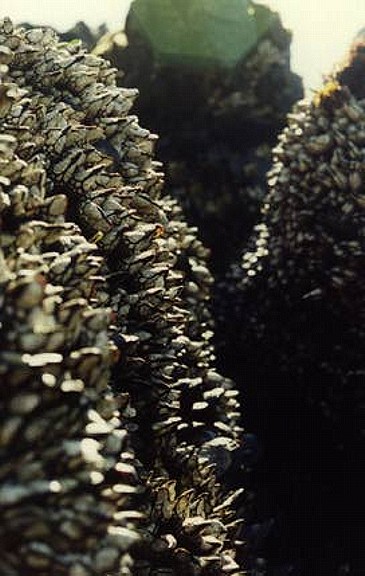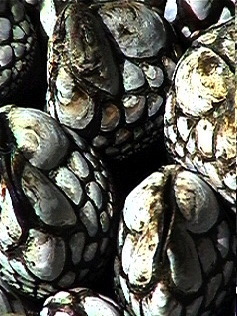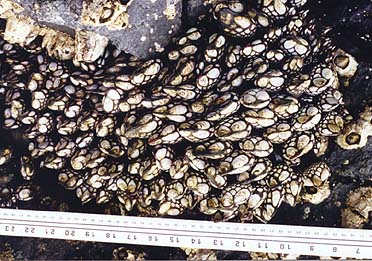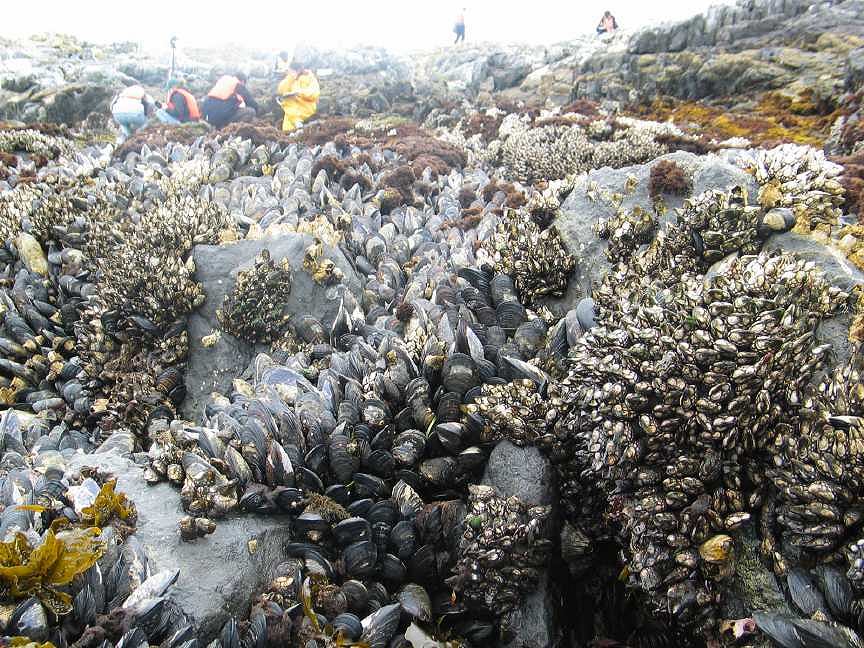
This low tide view on the south- west corner of Great Race shows the close competition between the California mussels and the goosenecks.
LOCATION:
The gooseneck barnacle, is found in abundance in the intertidal at Race Rocks. Globally. it is found from the southern region of Alaska to Baja, California. It is attached to rocks at the high intertidal zone and all organisms in a particular area will be oriented towards the same direction. It normally occurs on wave-beaten rocks. These barnacles have undergone extensive harvesting on the shorelines of the North Pacific, in particular around urban areas. Typically our record of conservation has been poor and continued harvesting results in very little stock recruitment and consequently a diminishing stock of this species. People of Western European origin frequently have a desire to eat this species, as it tastes very much like crab.
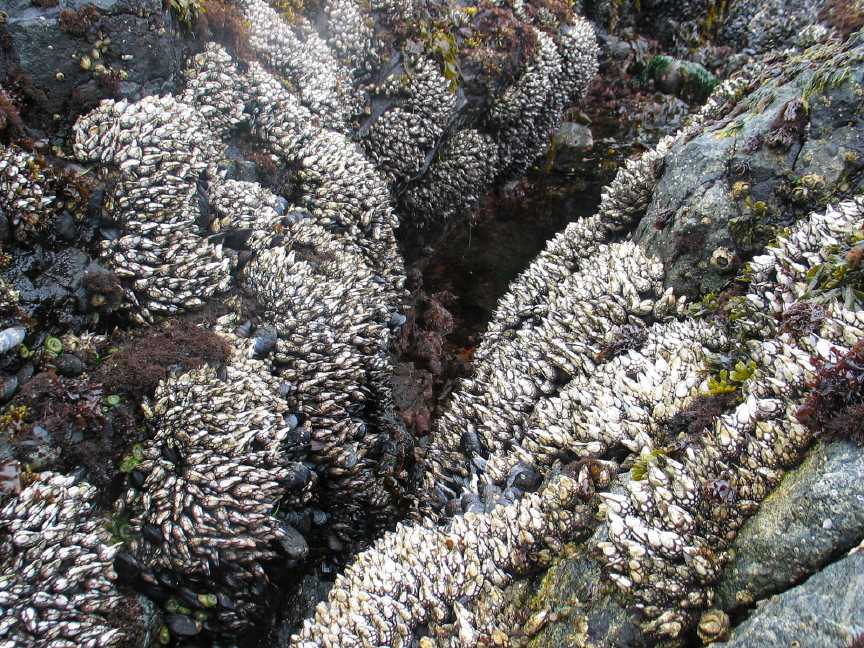 These clumps of gooseneck barnacles line the surge channel, if you see the video on the surge channel page , you can understand how they are exposed to a food source of plankton by the surge action even when they are above the tidal level.
These clumps of gooseneck barnacles line the surge channel, if you see the video on the surge channel page , you can understand how they are exposed to a food source of plankton by the surge action even when they are above the tidal level.
- on the walls of surge channel
- closeup
- a centimeter ruler to give size of the clump and the individuals
DESCRIPTION:
It has a fleshy stalk which attaches it to rocks or floating objects. The long neck is about up to 10cm. compared to the shell which is 5 cm. long. It has a leathery appearance with small bumps. The body consists of the peduncle and capitulum. The peduncle is the attachment organ but also contains ovaries and some muscles. It is covered with tiny ossicles on short fleshy stalk. the capitulum consists of most of the animal, including all appendages except the first antennae, The capitulum is ventral.
Domain Eukarya
Kingdom Animalia
Phylum Arthropoda
Class Cirripedia
Order Thoracica
Family Scalpellidae
Genus Pollicipes
Species polymerus
Common Name:Gooseneck Barnacle
–
REPRODUCTION AND FEEDING:
The organism is a hermaphrodite but they rarely undergo self fertilizaton. Cross fertilization is more common. Fertiliztion is external and it occurs in the mantle cavity. Gooseneck barnacles are filter feeders. They feed on smaller crustaceans and plankton. They do this by projecting their feathery feet called cirri to trap organisms. The cirri also act as lungs for gaseous exchange. Their main predators are the glaucous winged gull and the sea stars.
HISTORY:
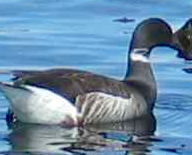 Their name, gooseneck barnacle arose from the middle ages where they were thought to be developing geese which dropped off to become adult geese. As such geese were considered as fish and could be eaten on days meat was considered a taboo. Check out the patterns on the neck of the Brant Goose.
Their name, gooseneck barnacle arose from the middle ages where they were thought to be developing geese which dropped off to become adult geese. As such geese were considered as fish and could be eaten on days meat was considered a taboo. Check out the patterns on the neck of the Brant Goose.
| Other Members of the Phylum Arthropoda at Race Rocks |
and Image File |
 The Race Rocks taxonomy is a collaborative venture originally started with the Biology and Environmental Systems students of Lester Pearson College UWC. It now also has contributions added by Faculty, Staff, Volunteers and Observers on the remote control webcams. October 2002- Garry Fletcher The Race Rocks taxonomy is a collaborative venture originally started with the Biology and Environmental Systems students of Lester Pearson College UWC. It now also has contributions added by Faculty, Staff, Volunteers and Observers on the remote control webcams. October 2002- Garry Fletcher |

